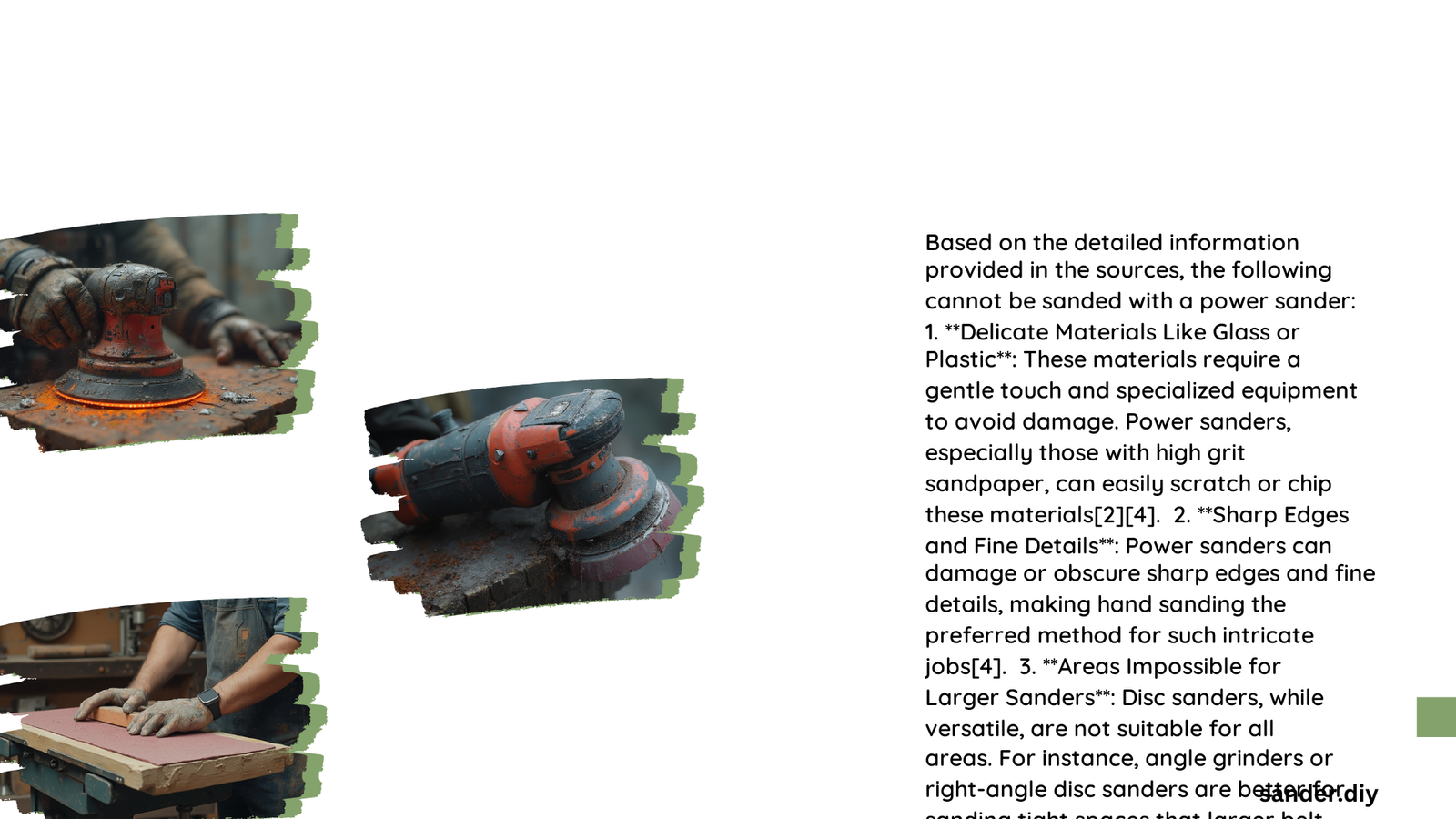Power sanders are versatile tools, but they have limitations. Certain materials and surfaces are unsuitable for power sanding due to their delicate nature, potential health hazards, or risk of damage. This article explores various items that cannot or should not be sanded with a power sander, including delicate materials, specific wood types, painted surfaces, and thin veneers.
What Materials Are Too Delicate for Power Sanding?
Delicate materials pose a significant challenge when it comes to power sanding. These include:
- Silk
- Paper
- Thin fabrics
- Delicate plastics
These materials lack the structural integrity to withstand the abrasive action and force of a power sander. Attempting to sand them would likely result in tearing, shredding, or complete destruction of the material.
Why Are These Materials Unsuitable?
- Lack of rigidity
- Low tensile strength
- Sensitivity to heat generated by sanding
- Inability to withstand abrasive action
Can Softwoods Always Be Safely Power Sanded?

While softwoods like pine and cedar can generally be sanded with a power sander, certain conditions make them challenging:
- Very thin pieces (less than 1/4 inch thick)
- Boards with knots or irregular grain patterns
- Green or unseasoned wood
What Precautions Should Be Taken with Softwoods?
When sanding softwoods:
- Use a light touch to avoid gouging
- Start with a coarser grit and progress to finer grits
- Move the sander slowly and evenly across the surface
- Be extra cautious around knots and areas of irregular grain
Are All Painted Surfaces Safe for Power Sanding?
Not all painted surfaces are suitable for power sanding. Here are some considerations:
| Paint Type | Suitability for Power Sanding |
|---|---|
| Lead-based paint | Never sand – health hazard |
| Latex paint | Generally safe, but may peel |
| Oil-based paint | Can be sanded if fully cured |
| Chalk paint | May require special techniques |
What Are the Risks of Sanding Painted Surfaces?
- Generation of toxic dust (especially with lead-based paints)
- Uneven removal of paint
- Damage to underlying surface
- Creation of airborne particles that can be harmful if inhaled
How Thin Is Too Thin for Veneers?
Veneers require special care when sanding. The general rule of thumb is:
- Veneers thinner than 1/16 inch (1.5 mm) are at high risk of damage
- Veneers between 1/16 inch and 1/8 inch require extreme caution
- Veneers thicker than 1/8 inch can usually be sanded safely with proper technique
What Techniques Work Best for Thin Veneers?
When sanding thin veneers:
- Use the finest grit sandpaper appropriate for the job
- Apply minimal pressure
- Keep the sander moving constantly
- Consider using a random orbital sander for more control
- Check your progress frequently to avoid sanding through the veneer
What Health and Safety Concerns Arise from Power Sanding?
Power sanding can create various health and safety risks:
- Inhalation of dust particles
- Eye irritation from airborne debris
- Potential exposure to toxic substances in paints or finishes
- Noise-induced hearing loss from prolonged exposure
How Can These Risks Be Mitigated?
To minimize health and safety risks:
- Always wear appropriate personal protective equipment (PPE):
- Dust mask or respirator
- Safety goggles
- Hearing protection
- Work in a well-ventilated area
- Use dust collection systems when possible
- Take regular breaks to reduce exposure time
What Alternatives Exist for Materials That Can’t Be Power Sanded?
For materials unsuitable for power sanding, consider these alternatives:
- Hand sanding with fine-grit sandpaper
- Chemical stripping for painted surfaces
- Planing or scraping for wood surfaces
- Specialized abrasive pads for delicate materials
When Should These Alternatives Be Used?
- Hand sanding: For delicate materials or fine finishing work
- Chemical stripping: When removing multiple layers of paint or finish
- Planing or scraping: For rough wood surfaces or removing large amounts of material
- Abrasive pads: For light surface preparation on sensitive materials
How Does the Type of Power Sander Affect What Can Be Sanded?
Different types of power sanders have varying levels of aggressiveness:
- Belt sanders: Most aggressive, best for large, flat surfaces
- Random orbital sanders: Versatile, good for most wood and metal surfaces
- Detail sanders: Least aggressive, ideal for tight spaces and corners
Which Sander Is Best for Delicate Work?
For delicate work, consider:
- Random orbital sanders with variable speed control
- Detail sanders with interchangeable pads
- Palm sanders for small, precise areas
By understanding the limitations of power sanders and the characteristics of different materials, you can avoid damaging surfaces and ensure safe, effective sanding practices. Always prioritize safety and, when in doubt, opt for gentler sanding methods or consult a professional.
References:
1. Electric Sander Speeds 101 – Uneeda
2. Electric Orbital Sander Buyer’s Guide – National Abrasives
3. How to Use a Power Sander – Lowe’s
